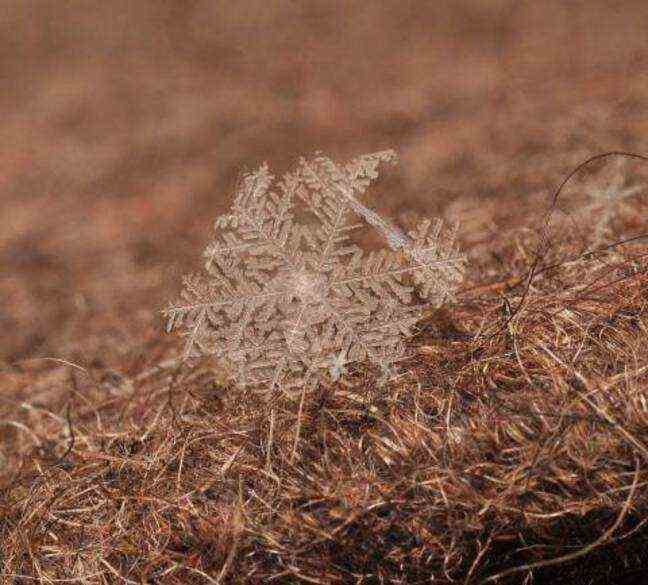Eyes of flies, rose petals… Photographs taken through the lens of a microscope have aroused the curiosity and passion of Internet users for years. It is still necessary that it is really about the announced subject.
One image has gone viral over the past few months – and maybe even years – on social media, accompanied by the caption: ‘Snow under the microscope’. With the onset of winter and a cold snap, the publication becomes trendy again. Internet users are ecstatic in front of this shot, which differs from the usual photo of a six-branched snowflake.
FAKE OFF
Contrary to what many Internet users claim, there is no snow or microscope involved in photography. A reverse image search brings up the site of Anglo-Irish artist Rogan Brown. The photo actually shows a detail of one of his paper sculptures. The work is part of a series called “Magic Circle Variation”, produced in 2017 using hand-cut and laser-cut. The artist explains on his site that he is inspired in his work by the “human microbiome, that is to say the vast colony of bacteria that live in and on our body and help us survive”.
Rogan Brown wants to highlight a part of the body that is still only being studied by scientists. “My goal here is to imagine what this microscopic habitat looks like. I researched images of bacteria and created stylized sculptural designs which I then placed in reef-like compositions celebrating the diversity and potential beauty of this hidden world. “
The artist, who lives in the south of France, is notably represented by the Winston Wachter Gallery in Seattle and the Parisian gallery Bettina. Rogan Brown directed several sculptures in this series, and many of them have been sold.
And, to be complete, snow under the microscope looks more like this, as this photo by Andrey Osokin at the Sipa agency shows:


